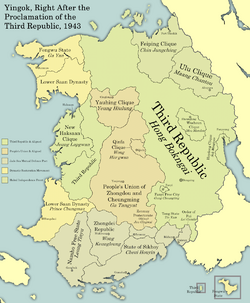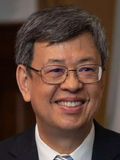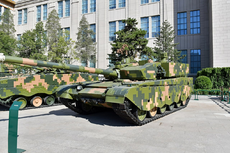Yingok: Difference between revisions
Philimania (talk | contribs) No edit summary |
Philimania (talk | contribs) No edit summary |
||
| Line 132: | Line 132: | ||
==== Yinese Revolution and First Republic ==== | ==== Yinese Revolution and First Republic ==== | ||
The late 19th century was characterised by the weakening of the central government, leading to a fragmentation of power across various regions of Yingok, as numerous {{wp|warlord}}s and local strongmen seized power. This marked the beginning of the [[Fourth Winter Period]] in history. By the beginning of the 1880s, the most influential faction in Yingok emerged as the [[Gumsha Clique]] in [[Sikhoy]], led by the young [[Cheui Houyin]] who controlled much of foreign imports flowing into the country. Prior to the onset of the Yinese Revolution, numerous coups against the Saan monarch had been attempted, bolstered by an inefficent bureaucracy, corrupt {{wp|legislature}}, political instability, and rising anti-dynastic sentiments. Notably, the [[1889 Yinese coup attempt]] which caused the [[Dongsing bombing of 1889|Dongsing bombing]] that resulted in the death of around 173 people. | |||
1892, [[Ho Siyat]]<!--(何士日)-->, a prominent Yinese politician, revolutionary leader, and head of the [[Kungwogun]]<!--(共和軍)--> milita orchestrated a successful coup in the capital in June, backed by support from several warlords and high-ranking government officials. This coup marked the beginning of a new era with the establishment of the [[First Republic of Yingok]]. However, a botched attempt to arrest the royal family allowed them to escape into exile in X. This, coupled with the resistance of many warlords along the western and southern coasts as well as in the northern regions who refused to recognise the authority of the state caused many to view the new republic as an illegitimate government, despite the rampant anti-monarchist sentiments. | |||
[[File:Huaihai.png|thumb|250px|Entrenched Yinese soldiers during the [[Yingok-Haksaan War]].]] | [[File:Huaihai.png|thumb|250px|Entrenched Yinese soldiers during the [[Yingok-Haksaan War]].]] | ||
The early years of the First Republic were marred by attempts by the central government to assert its control over the rest of Yingok through military force, often resulting in small-scale acts of violence and terror perpetrated by both government and warlord forces, most notably the [[Heungsaan Incident]] (1892), [[Lunghap Standoff]] (1894), and the [[Fongzou Bombing of 1897]]. These incidents, among many others, further exacerbated tensions and contributed to the combined instability within the country. The most famous incident, the [[Battle near Muksek]], led to the outbreak of the [[Yingok-Haksaan War]] on 12 February 1895 with the central government clashing with the [[Old Haksaan Clique]]. This conflict eventually led to the replacement of the Old Haksaan Clique with the pro-government [[New Haksaan Clique]] on 26 September 1897. | |||
On 16 July 1896, Ho Siyat established the [[Kongwotong]] <!--(共和黨; Republican Party)-->and oversaw the ratification of the first [[Constitution of Yingok]], which laid the groundwork for the formation of the [[National Diet of Yingok]] and the establishment of key government positions such as [[President of Yingok|president]], [[Vice President of Yingok|vice president]], and [[Chancellor of Yingok|chancellor]]. Ho also declared himself the first president of Yingok, and announced that the first election to be held in 7 years. In reaction, several new political parties also emerged, including the [[Kwokmuntong]]<!--(國民黨; Nationalist Party)--> in 1897 and the [[Kongchangtong]]<!--(共產黨; Communist Party)--> in 1900. | |||
By 1899, anti-Kongwotong sentiments had coalesced into a alliance of warlords in the north and west of the country, challenging the authority of the First Republic and establishing the [[Chiusaan Confederacy]], led mainly by the [[Fumen Clique|Fumen]], [[Gutdong Clique|Gutdong]], and [[Choi Clique]]s with numerous other factions also considered members of the Confederacy. This development sparked a series of confrontations between government and Confederacy forces across Yingok. | |||
The assassination of Ho Siyat on the afternoon of 2 November 1900 in a shootout with local anti-government {{wp|militia}}s during a visit to [[Wongzen]] further shook the political system of Yingok. In the aftermath, vice president [[Baak Yingman]]<!--(白英萬)--> was sworn in as {{wp|acting president}}, declaring {{wp|martial law}} and seized the opportunity to accuse the Chiusaan Confederacy for the death of the late president. Violent clashes erupted between pro-government <!--[[Cheungming Clique]]-->and pro-Confederacy groups as a result in cities like [[Cingdou]], [[Gaiwing]], [[Wodhun]] and [[Nanshui]], leading to series of brutal skirmishes and small scale battles. Meanwhile, President Baak ordered the crackdown on possible anti-Kongwotong militias and dissenting factions, leading to widespread arrests as well as supression of civilian protests, with many being accused of being part of a "anti-government plot". | |||
In 1902, Pro-Confederacy forces launched a series of attacks against colonial authorities in X which were loyal to the Saan, thus marking the beginning of several operations which aimed to subjegate Yinese {{wp|colony|colonies}} under the Chiusaan Confederacy. | |||
The failure of the government to hold elections in 1903 sparked widespread discontent among the populace, particularly in urban areas where many protests and strikes were organised by the Kongchangtong (which had gained the favour of various labour movements) and other opposition groups in protest. The most famous of which occured in August of 1903 where members of the [[United Mine Workers of Yin Gok]] clashed with local {{wp|police}} in [[Liuham]], resulting in the [[Liuham Massacre of 1903|Liuham Massacre]] when the military was deployed to suppress the protesters, causing the deaths of some 40 people. | |||
Amidst the growing unrest, divisions within the military manifested, with some factions aligning with the [[Kongchangtong]] and other opposition factions within the government while others remained loyal to the government. The Kwokmuntong, meanwhile, formed close alliances with the Confederacy following negotiation in 1904 over their mutual distrust of the current government of Yingok. | |||
==== Empire of Yingok ==== | ==== Empire of Yingok ==== | ||
Revision as of 12:07, 23 February 2024
This article is incomplete because it is pending further input from participants, or it is a work-in-progress by one author. Please comment on this article's talk page to share your input, comments and questions. Note: To contribute to this article, you may need to seek help from the author(s) of this page. |
Fourth Republic of Yingok 燕華第四共和國 (Yinese) | |
|---|---|
| Anthem: 燕華國歌 Yinwàh Gwokgō "National Anthem of Yingok" | |
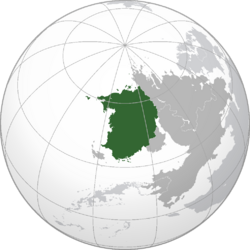 Location of Yingok (green) in Abaria (dark grey) | |
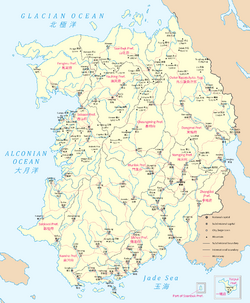 Subdivisional map of Yingok | |
| Capital | Dongsing |
| Largest city | Hoyzhau |
| Official languages | Yinese |
| Recognised regional languages | Shanese |
| Ethnic groups (2022) | 83% Yinese 14% Shanese 3% Others |
| Religion (2022) | 73% Sendou 21% Irreligion 6% Others |
| Demonym(s) | Yinese |
| Government | Unitary presidential constitutional republic |
| Yeung Kapkaa | |
| Dong Dak | |
| Nam Gat | |
| Wu Suk-fan | |
| Legislature | National Diet |
| History | |
| c. 3000 BCE | |
| 12-23 June 1892 | |
| 7 March 1966-23 November 1981 | |
| 19 April 1974 | |
| 29 December 1985 | |
| Area | |
• Total | 8,037,614 km2 (3,103,340 sq mi) |
• Water (%) | 0.004 |
| Population | |
• 2022 estimate | |
• Density | 81.17/km2 (210.2/sq mi) |
| GDP (PPP) | 2022 estimate |
• Total | |
• Per capita | |
| GDP (nominal) | 2022 estimate |
• Total | |
• Per capita | |
| Gini (2022) | medium |
| HDI (2022) | very high |
| Currency | Tungbei (銅幣/₣, TBI) |
| Time zone | UTC-9 and -7 to -5 (Yatpui Mean Time, YMT; Northwestern Yinese Time, NYT; Central Yinese Time, CYT; and Outer Razan Standard Time, ORST) |
| Date format | dd-mm-yyyy |
| Driving side | right |
| Calling code | X |
| Internet TLD | .yn |
Yingok (Yinese: 燕國; Jinping: Jin3 Gwok3; Yinese X Cambranisation: Yin-gwok), officially the Fourth Republic of Yingok (Yinese: 燕華第四共和國; Jinping: Jin3 Waa4 Dai6 Sei3 Gung6 Wo4 Gwok3; Yinese X Cambranisation: Yin-wàh Daih Sei Guhng-wòh-gwok) is the second largest country in Abaria. With an estimated population of over 600 million, Yingok is bordered by the Glacian Ocean to the north, Razan, X, and X to the east, the Alconian Ocean to the west, and the Jade Sea to the south. Its 13 prefectures and 1 autonomous region spans a combined area of roughly 8,037,614 km2 (3,103,340 sq mi). Yingok is a unitary presidential constitutional republic with its capital in Dongsing, the largest city in Yingok by population. The largest city in the country by area is Hoyzhau which also serves as Yingok's main economic and commercial centre. Other major urban areas include Gongbuk, Samlong, Sei'on, Hasaan, and Yunzhau.
Yingok was initially inhabited by the Zhong Dynasty, followed by the An Dynasty, which brought significant cultural and technological advancements. However, the An Dynasty eventually fractured, leading to a fragmented political landscape and the rise of the Chiu Dynasty, which brought political stability and a cultural renaissance. The region experienced invasions from the !Vietnamese and the !Mongol Empire, leading to periods of conflict and disruption. The 15th century marked the beginning of the Third Winter Period, characterised by intense competition among various factions. This era eventually gave way to the Three Kingdoms Period, with the Hon Dynasty, Jeong Dynasty, and emerging Dong Kingdom vying for dominance over Yingok. The Saan Dynasty emerged victorious and established relative stability which lasted for nearly 3 centuries. The dynasty oversaw the rise of the Saan colonial empire. Internally, economic growth and a cultural rebirth during the period characterised the Saan Dynasty's reign over Yingok. This coincided with the appearance of Calesian influence and culture at the beginning of the 17th century.
In the 19th century, Yingok embraced the Industrial Revolution, leading to rapid urbanization and socio-political changes. The Saan Dynasty's response to demands for reforms varied, leading to political unrest. The dynasty was overthrown in 1892, and Yingok went through a series of political upheavals, including various dictatorships and revolutions. Yingok remained neutral during the Great War due to internal conflicts. In 1966, a civil war erupted between different factions, culminating in a nationalist victory and the establishment of the Fourth Republic. Throughout its history, Yingok has maintained complex relationships with its neighbours, pursuing diplomacy and economic cooperation. It seeks regional stability, trade, cultural exchanges, and peaceful conflict resolution. Present-day Yingok has implemented political reforms, aiming for a more democratic and inclusive society, although challenges remain in fully implementing political freedoms and civil rights.
Yingok retains its centuries-long status as a global centre of art, science and philosophy. It is the world's leading tourist destination, receiving over 73 million foreign visitors in 2020. Yingok is a developed country with the world's X-largest economy by nominal GDP and X-largest by PPP; in terms of household net income, it ranks X in the world. Yingok performs well in international rankings of health care, life expectancy and human development. It remains a great power in regional affairs, being leading member of numerous international organisations including the United Congress, X, and the Abarian Regional Forum.
Etymology
The word "Yingok" derives from two Yinese characters: 燕 (yin) referring to the Yinese people and 國 (gwok) meaning "state". However, this name was not in use until around the rise of Yinese nationalism during the late 19th century. The term itself (rendered as "Yin-guok") first appeared in the 1876 translation by Edwin Gallagher of End of Cycles by X which called for the abolition of the Yinese dynastic system. The name was then popularised in the 1886 Pocket Guidebook and Dictionary to the Yinese State and Language, a bestseller by the !Christian missionary X. In popular culture, the name Yingwok is often translated as the "Kingdom of the Yin".
Prior to the term "Yingok", the name of the operating dynasty was always used to refer to Yingok. Outside the region however, most notable in Calesia, the name "Chiuchu" was primarily used to refer to Yingok. Its origins has been traced through X, X, X and X back to the !Vietnamese word chiều triều. "Chiuchu" first appeared in a letter dated 16 May 1497 from a X merchant who had visited X that year. The word Chiuchu has been suggested by many Calesian scholars to have derive from the name for the Chiu Dynasty (918-132 BCE). Although usage in !Vietnamese sources precedes this dynasty, this derivation is still given in various sources.
The simplified name Yingok was in frequent use by the beginning of the 1900s. Despite the establishment of the Republic of Yingok a decade prior, many outside Yingok continued to refer to the country as Chiuchu until the end of the 1920s. The name was also commonly written as the two-word Yin Gok until 1986 when the government officially adopted the one-word name. Some corporations and organisations founded before this date still keeps this name, including Yin Gok Electric Company, Yin Gok Hotels, Yin Gok Merchant Banking Corporation, and Yin Gok Railway Union.
History
Prehistory
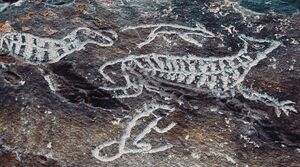
Yingok is home to one of the world's oldest civilisation. Early hominids have inhabited the region as early as 1.05 million years ago, with the fossils of the Yunjou Man, a Homo erectus dating back to this period. The fossilised remains of early Homo sapiens of the Proto-Longic A culture dated roughly 50,000 years ago were also discovered in the Munlok region, along with stone tools and evidence of early settlements. Paleolithic sites are also known to exist, most notably the Daisek cave paintings in Dongzhong (15,000 BCE), the Shuitou pillars near Honliun (13,000 BCE), and the Cingtongfa Rock Arts in Cingtongfa (9,000 BCE).
The first evidence of pottery in Yingok dates back to around 7,000 BCE. This coincided with the rise of water levels, separating Yingok with !Japan as well as providing fertile land for early agricultural practices brought about by the end of the X Ice Age. The Neolithic in Yingok witnessed the emergence of settled farming communities, marking a significant shift in human development in the region. Yinese proto-writing, characterised by intricate symbols and pictograms, began to emerge during the Neolithic Age. They have existed in Tongmun near Yuthung since approximately 5,200 BCE, marking the beginning of the Proto-Longic B culture. Proto-Longic B marked a crucial phase in the region's development. This period witnessed the further advancement of settled farming communities and the emergence of Proto-Longic B script, a significant development in Yinese proto-writing around 4,000 BCE. The society during the Proto-Longic B period was organized into small-scale chiefdoms, where local leaders held authority over their communities. These chiefdoms engaged in trade and exchange, allowing large networks of activity between the different regions of Yingok. Excavations at various sites dating back to this period have unearthed remnants of dwellings, tools, and artefacts, shedding light on their subsistence practices, craftsmanship, and social structures, most notably the Gongyun ruins near Sheunglong. The transition from hunter-gatherer societies to settled agricultural communities brought about significant changes in their way of life. The first evidence of silk production also dated back to this period (3538 BCE) and was written in the historical records of the ancient settlement of Kunsaan near Qinfa.
Early dynasties
TBA
First Winter Period and Chiu Dynasty
TBA
Southern invasion and Second Winter Period
TBA
Two Kingdoms Period and !Mongol rule
TBA
Third Winter and Three Kingdoms Period
TBA
Imperial dynasties and colonialism
Saan Dynasty and the Imperial Reformation
TBA
Industrial Revolution
TBA
Fourth Winter Period
Yinese Revolution and First Republic
The late 19th century was characterised by the weakening of the central government, leading to a fragmentation of power across various regions of Yingok, as numerous warlords and local strongmen seized power. This marked the beginning of the Fourth Winter Period in history. By the beginning of the 1880s, the most influential faction in Yingok emerged as the Gumsha Clique in Sikhoy, led by the young Cheui Houyin who controlled much of foreign imports flowing into the country. Prior to the onset of the Yinese Revolution, numerous coups against the Saan monarch had been attempted, bolstered by an inefficent bureaucracy, corrupt legislature, political instability, and rising anti-dynastic sentiments. Notably, the 1889 Yinese coup attempt which caused the Dongsing bombing that resulted in the death of around 173 people.
1892, Ho Siyat, a prominent Yinese politician, revolutionary leader, and head of the Kungwogun milita orchestrated a successful coup in the capital in June, backed by support from several warlords and high-ranking government officials. This coup marked the beginning of a new era with the establishment of the First Republic of Yingok. However, a botched attempt to arrest the royal family allowed them to escape into exile in X. This, coupled with the resistance of many warlords along the western and southern coasts as well as in the northern regions who refused to recognise the authority of the state caused many to view the new republic as an illegitimate government, despite the rampant anti-monarchist sentiments.
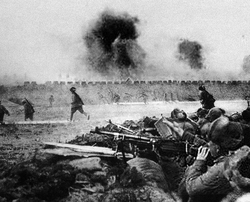
The early years of the First Republic were marred by attempts by the central government to assert its control over the rest of Yingok through military force, often resulting in small-scale acts of violence and terror perpetrated by both government and warlord forces, most notably the Heungsaan Incident (1892), Lunghap Standoff (1894), and the Fongzou Bombing of 1897. These incidents, among many others, further exacerbated tensions and contributed to the combined instability within the country. The most famous incident, the Battle near Muksek, led to the outbreak of the Yingok-Haksaan War on 12 February 1895 with the central government clashing with the Old Haksaan Clique. This conflict eventually led to the replacement of the Old Haksaan Clique with the pro-government New Haksaan Clique on 26 September 1897.
On 16 July 1896, Ho Siyat established the Kongwotong and oversaw the ratification of the first Constitution of Yingok, which laid the groundwork for the formation of the National Diet of Yingok and the establishment of key government positions such as president, vice president, and chancellor. Ho also declared himself the first president of Yingok, and announced that the first election to be held in 7 years. In reaction, several new political parties also emerged, including the Kwokmuntong in 1897 and the Kongchangtong in 1900.
By 1899, anti-Kongwotong sentiments had coalesced into a alliance of warlords in the north and west of the country, challenging the authority of the First Republic and establishing the Chiusaan Confederacy, led mainly by the Fumen, Gutdong, and Choi Cliques with numerous other factions also considered members of the Confederacy. This development sparked a series of confrontations between government and Confederacy forces across Yingok.
The assassination of Ho Siyat on the afternoon of 2 November 1900 in a shootout with local anti-government militias during a visit to Wongzen further shook the political system of Yingok. In the aftermath, vice president Baak Yingman was sworn in as acting president, declaring martial law and seized the opportunity to accuse the Chiusaan Confederacy for the death of the late president. Violent clashes erupted between pro-government and pro-Confederacy groups as a result in cities like Cingdou, Gaiwing, Wodhun and Nanshui, leading to series of brutal skirmishes and small scale battles. Meanwhile, President Baak ordered the crackdown on possible anti-Kongwotong militias and dissenting factions, leading to widespread arrests as well as supression of civilian protests, with many being accused of being part of a "anti-government plot".
In 1902, Pro-Confederacy forces launched a series of attacks against colonial authorities in X which were loyal to the Saan, thus marking the beginning of several operations which aimed to subjegate Yinese colonies under the Chiusaan Confederacy.
The failure of the government to hold elections in 1903 sparked widespread discontent among the populace, particularly in urban areas where many protests and strikes were organised by the Kongchangtong (which had gained the favour of various labour movements) and other opposition groups in protest. The most famous of which occured in August of 1903 where members of the United Mine Workers of Yin Gok clashed with local police in Liuham, resulting in the Liuham Massacre when the military was deployed to suppress the protesters, causing the deaths of some 40 people.
Amidst the growing unrest, divisions within the military manifested, with some factions aligning with the Kongchangtong and other opposition factions within the government while others remained loyal to the government. The Kwokmuntong, meanwhile, formed close alliances with the Confederacy following negotiation in 1904 over their mutual distrust of the current government of Yingok.
Empire of Yingok
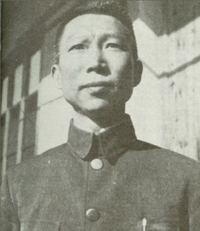
- In 1905, Baak Yingman (白英萬) desolved the National Diet and declared the reorganisation of the First Republic into the Empire of Yingok.
- Baak Yingman's declaration of the Empire of Yingok was met with mixed reactions across the nation, with some viewing it as a necessary step towards stability and others as a betrayal of democratic ideals.
- In the same year, the Cheungming Clique would come under the leadership of a pro-Kongchangtong leader after a coup, allowing the Kongchangtong a secure base.
- By 1906, X colony would capitulate to Confederacy forces, with new operations beginning in X and X colonies.
- At the same time, the Kongchangtong and Chiusaan Confederacy declared an alliance against the Empire of Yingok, forming the United Yinese Front.
- In winter, a series of brutal crackdowns by imperial forces resulted in widespread civilian casualties and further fueled resentment towards the new imperial government.
- Partisan movements sprang up in various regions, particularly in rural areas where imperial control was weakest and anti-imperials fled.
- War broke out in 1908 between Yingok and the United Yinese Front in what is known as the Union-Imperial War.
- War ended in 1911 with the capture of Baak and the establishment of the Second Republic in autumn.
Second Republic
- Disagreements between the Confederacy and Kongchangtong over the governance of the Second Republic led to internal strife within the newly formed government.
- Warlords became more powerful during the conflict, exacerbated by the squabbling government of the Second Republic.
- In 1913, a new Constitution was agreed on, and the first election took place the same year, resulting in a Kongchangtong victory with Gong Yunwai sworn in as president. However, the victory was marred by accusations of electoral fraud and violence in some regions. Despite these challenges, Gong Yunwai's presidency marked a brief period of relative stability.
- Meanwhile, warlordism continued to plague many regions of Yingok, with local strongmen asserting their authority and often disregarding the central government's directives.
- In 1918, the State of Sikhoy was proclaimed by the Gumsha Clique.
- This was followed by the proclamation of several other breakaway states by various warlords and factions.
- In the 1920 election, the Kwokmuntong emerged victorious, leading to the election of their candidate Lo Waijing (盧偉靜).
- The Second Republic struggled to assert its authority over the breakaway states and warlord factions, leading to numerous violent episodes.
- The rise of nationalist sentiment among various ethnic groups further complicated efforts to maintain unity, with some regions pushing for greater autonomy or even independence.
- In 1923, a major uprising erupted in Joldu, Outer Razan, demanding representation and autonomy for the region's ethnic minority groups.
- The Joldu Uprising quickly escalated into a full-blown rebellion against the central government, drawing support from the Feiping Clique.
- The uprising was crushed in 1927.
- In the same year, another election took place which resulted in the re-election of Lo Waijing.
- An uprising began in X colony in 1928, fueled by emerging dissatisfaction with colonial rule and inspired by the broader political turmoil within Yingok.
- Labour strikes resurfaced at the beginning of the 1930s in response the worsening economic conditions.
- In response, Lo Waijing announced the Six-Year Plan for Economic Reconstruction.
- However, implementation of the plan faced significant challenges due to opposition from entrenched interests and the continued dominance of warlords in many regions.
- In 1931, Saan Dynasty prince in exile Chungmau (衝眸) returned to Yingok from X, claiming legitimacy as the rightful ruler of Yingok.
- His claims were met with mixed reactions, with loyalists to the Saan Dynasty existing mainly in Sankwai and Fengwu.
- In the same year, the Lower Saan Dynasty was proclaimed in Sankwai.
- Tired of the Second Republic's inability to address ongoing crises, primarily with the labour strikes and movements, Kongchangtong orchestrated the succession of the People's Union of Zhongdou and Cheungming in 1934.
- In the same year, Lo Waijing was re-elected for the third time.
- In 1936, an incident in Wochun sparked conflict between Yingok and the Republic of Long in Zhongdei.
- This drew alarm from other breakaway states which prompted the formation of the Jade Sea Mutual Defence Pact in 1937.
- The Republic of Long was dissolved in 1940 and reintegrated into Yingok.
- In 1941, Lo Waijing died of a stroke, heightening tensions between the Kwokmuntong, Kongchangtong, Confederacy and Weikuntong (威權黨; which was formed by remnants of the Kongwotong when the Empire of Yingok ended).
- The death of president Fong Yunwai (方潤威) of the Kwokmuntong and various other key politicians the following year in a series of bombings by pro-monarchist terrorists further complicated matters.
- Political instability intensified as competing factions within the government vied for power in the vacuum left by the deaths of the key leaders.
- The eventual election of Hong Bokngai (康博毅) of the Confederacy Coalition in 1942 led to the beginning of several economic and social reforms.
- Efforts were made to reconcile with disenfranchised communities and marginalized groups.
- Economic restructuring initiatives were launched to diversify the economy and reduce dependence on traditional industries.
- The government also implemented programmes to improve social welfare, healthcare, and education.
- However, these reforms faced significant resistance from conflicting interests and conservative factions within the government.
- A fragile peace between political factions was maintained with the government under Hong Bokngai.
- At the beginning of 1943, the Constitution of Yingok underwent significant revision, changes included the shortening of the presidential term to six years and the establishment of term limits for the presidency of 3 terms.
- With the ratification of the new Constitution, Hong proclaimed the establishment of the Third Republic.
Third Republic
- In 1944, Yingok consolidated its military power and began the Hakul Campaign.
- The Hakul Campaign aimed to assert Yingok's dominance over the northeastern cliques of Feiping and Ulu, which succeeded in 1948.
- In 1949, Hong was re-elected.
- For his second term, Hong negotiated with the Jade Sea Mutual Defence Pact to re-joining Yingok.
- The State of Sikhoy accepted the offer to be reintegrated into Yingok as a prefecture in 1951 along with the Zenmuy Protectorate which was annexed by Sikhoy.
- In 1952, the Kongchangtong was banned from the Yinese government when journalist X exposed evidence in their involvement in the succession of the People's Union.
- Protests erupted across Yingok following the banning, with supporters of the party decrying what they perceived as an infringement on their political rights.
- By 1954, the Jade Sea Mutual Defence Pact collapsed mainly due to the loss of Sikhoy and major disagreements between the Namho Free State and Zhongdei Republic.
- In the same year, the two states would go to war over a disputed farming village along their border. (Namho-Zhongdei War)
- In 1955, Kwokmuntong politician Siu Gunyu (邵冠宇) won the presidency in a closely contested election.
- The Namho Free State would win the war against Zhongdei in 1957.
- In the same year, X colony won its independence from Yingok which was unable to respond due to its mainland problems.
- In 1959, the Haksaan-Fui Reorganisation Act was passed by the National Diet, annexing all of Yingok's satellite territories, including the New Haksaan Clique, Fanyi Free City, Hoydong Clique, Wuchuen Clique, Order of Fui, and the Teng State.
- In the same year, Prince Chungmau of the Lower Saan Dynasty was assassinated.
- The state itself would be paralysed with no clear line of succession.
- Two possible heirs, Princes Cheunyam and Ngawai (春蔭 and 雅惠) emerged, sparking a bitter power struggle.
- Taking advantage, both the Kongchangtong and the Yinese government sought to exploit the power vacuum.
- Yingok backed Prince Ngawai, in exchange for his pledge to integrate Sankwai and Fengwu back into the Yingok as autonomous territories.
- The Kongchangtong in the People's Union opted to invade the Lower Saan Dynasty, aiming to extend their influence in preparation for what many within the party saw as an inevitable confrontation with the Third Republic.
- In the 1961 election, a split in the Confederacy vote between Hong Bokngai and Mou Mandou as well as Siu Gunyu's refusal to participate led to the victory of Yin Kyun (賢權) of the Weikuntong.
- Yin Kyun's administration is characterised by the strengthening of the bureaucracy and the expansion of government control over various sectors of the economy.
- By 1962, the People's Union had captured most of Fengwu, with minor skirmishes occurring against the Third Republic.
- Around the same time, the Confederacy Coalition collapsed amidst internal disagreements.
- Meanwhile, entrenchment of the two remaining major political factions within the Third Republic deepened.
- Political instability characterised the last few years of the Warlords Era.
- Corruption and inefficiency began to plague the government.
- The escalation of tensions between the Yinese government and the Kongchangtong-led People's Union, especially over the matter of the Lower Saan Dynasty finally culminated in the outbreak of war in 1966.
Yinese Civil War
TBA
Fourth Republic and onwards
TBA
Geography
TBA
Climate
TBA
Biodiversity
TBA
Environment
TBA
Government and politics
Yingok is classified as a unitary presidential constitutional republic, with the president acting as head of state and head of government as well as commander-in-chief of the Yinese Armed Forces. The president and vice president are elected by direct election for six-year terms, with a limit of three consecutive terms. The president appoints and presides over the cabinet, subject to the approval of the Appointments Committee. The vice president is the first in line for succession if the president resigns, is removed after impeachment, is permanently incapacitated, or dies. The vice president is usually, though not always, a member of the president's cabinet and may be appointed without the approval of the Appointments Committee. If there is a vacancy in the position of vice president, the president will appoint any member of the National Diet (usually a party member) as the new vice president. The appointment must then be validated by a three-fourths vote of the National Diet. The incumbent president and vice president are Yeung Kapkaa and Dong Dak, elected in 2021
Legislative power is vested in the unicameral National Diet, with its 92 members elected for 4-year terms. Each subdivision are allowed three representatives which are elected via direct vote in their respective subdivisions, while the remaining 50 members of the National Diet are elected proportionally based on the total national vote. The National Diet is headed by the Chancellor, currently Nam Gat, who is elected from among its members by a majority vote for 4-year terms. The Chancellor serves as the presiding officer of the National Diet and is responsible for facilitating legislative proceedings, and maintaining order within the National Diet.
The judicial branch is headed by the Supreme Court of Yingok, which serves as the highest court in the country. It is led by the Chief Justice, currently Wu Suk-fan, and comprises of 6 associate justices. The justices are appointed by the president on the recommendation of the Judicial Committee. Each subdivision has its own court system, which handles cases within their respective jurisdictions.
Since the Fung administration, corruption has been a key focus of reform in Yingok. The government has initiated various measures to combat and address corrupt practices within the country, including a lengthy anti-corruption campaign that has led to significant changes in the political and social landscape. The Anti-Corruption and Ethics Committee (ACEC) was also established as well during the Fung administration as an independent agency with the primary goal of investigating and prosecuting cases of corruption at all levels of government.
Allegations of corruption
TBA
Law
TBA
Subdivisions
Yingok is divided into 13 prefectures and 1 autonomous region. The prefectures are further subdivided into 394 counties and 23 municipalities. The Outer Razan autonomous region holds a higher degree of autonomy in local governance and decision-making.
Each prefecture is overseen by a local assembly and is headed by a prefectural governor who is elected by the population of the respective prefecture for a term of 5 years, with a limit of three consecutive terms. the local assemblies are comprised of representatives from the counties and municipalities within each prefecture. These representatives are elected by the county or municipal population for 4 year terms. While each local assembly operates independently from the National Diet, they are ultimately accountable to the central government and must abide by national laws and policies
| Flag | Name | Capital | Population |
|---|---|---|---|
| Namging | Dongsing | X | |
| Outer Razan | Altayara | X | |
| Seisaan | Yunzhau | X | |
| Dongmei | Hoyzhau | X | |
| Sikhoy | Samlong | X | |
| Fungwu | Wunsing | X | |
| Zhongdei | Bikhoy | X | |
| Sankwai | Sei'on | X | |
| Yauhing | Cinglong | X | |
| Munlok | Wongzen | X | |
| Cheungming | Qinfa | X | |
| Namho | Gongbuk | X | |
| Yatpui | Yukgong | X | |
| Saanbak | Fumun | X |
Foreign relations
TBA
Military
The Yinese Defence Force (YDF) serves as the armed forces of Yingok, playing a pivotal role in safeguarding the nation's security, protecting its sovereignty, and contributing to regional stability. It is comprised of several branches, including the Yinese Army (YA), Yinese Navy (YN), Yinese Air Force (YAF), and the Yinese Space Force (YSF). In 2022, Yingok military expenditure was $382.4 billion, or 3.9% of the Yinese GDP. Leadership of the YDF is vested in the Bureau of Defence, with the President of Yingok acting as commander-in-chief. With a total personnel count of 1.37 million, the YDF is considered one of the largest military forces in the world behind X.
27 military research laboratories are considered to be components of the Yinese Armed Forces, under the authority of the Bureau of Defence. These laboratories play a critical role in advancing the YDF's technological capabilities, supporting research and development efforts to enhance the military's readiness and effectiveness. In terms of intelligence, the military branch is led by the Military Intelligence Division (MID) and serves under the Bureau of Defence, while the civilian branch is led by the National Intelligence Office (NIO) under the Yinese National Police Force. Yingok's cybersecurity capabilities are regularly ranked as some of the most robust of any nation in the world.
In 2021, national conscription was abolished by the National Diet.
Economy
TBA
Industries
TBA
Energy
TBA
Science and technology
TBA
Infrastructure
TBA
Tourism
TBA
Demographics
TBA
Religion
TBA
Language
TBA
Education
TBA
Health
Culture
TBA
Art
TBA
Architecture
TBA
Literature
TBA
Philosophy
TBA
Cuisine
TBA
Music
TBA
Cinema
TBA
Fashion
TBA



